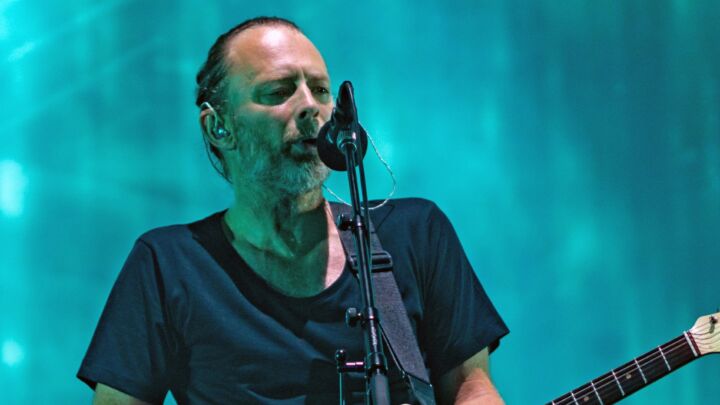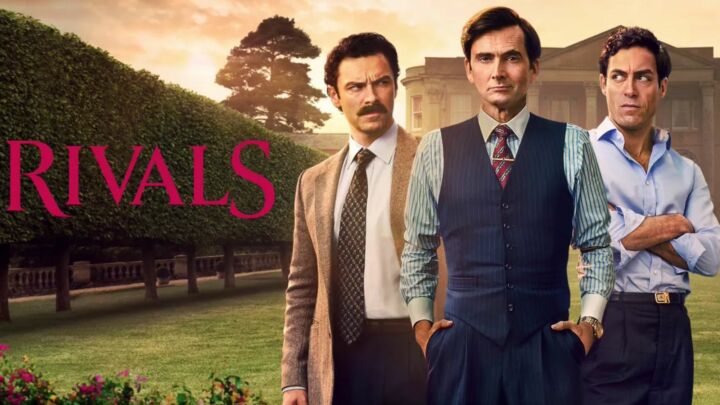House of Flying Daggers
The crisis of the Hollywood hero is forcing cinema audiences to look east for their superhumans.

Want to read spiked ad-free? Become a spiked supporter.
Based on US box office figures and festival circuit success, House of Flying Daggers (Shi mian mai fu) seems set to become a blockbuster throughout the English-speaking world. Like many of the movies bunched together as ‘the new Asian cinema’, Daggers is spectacular to look at and, in a nod to the often-overlooked art of the sound designer, spectacular to listen to.
A literal translation of Shi mian mai fu means ‘Ambush from 10 Sides’, providing a neat synopsis of at least half of the action scenes in the film. Everything is gorgeously shot, with swirling, colour-coded cloth and Zhao Xiaoding’s beautiful cinematography making every fight scene resonate with balletic poignancy. One dynamic duel follows another; alliances are formed and broken like lines in the sand.
The plot starts out simple. Police deputies Jin (Takeshi Kaneshiro) and Leo (Andy Lau) are instructed to break the back of the House of Flying Daggers, a secret society of insurgents opposed to the Tang Dynasty. Their plan becomes complicated after a meeting with Mei (Ziyi Zhang), a blind courtesan at an exclusive bordello. As the deputies fall for her charms, it transpires that no one is quite who they appear to be. A love story breaks through the political intrigue, occasioning epic battles, including one where the seasons change around the characters.
Key elements of House of Flying Daggers are drawn from the Wuxia tradition of Chinese storytelling. Wuxia refers to the ‘martial arts of chivalry’, a credo not entirely dissimilar to the Japanese Samurai code of Bushido. Through martial arts practice the Wuxia hero becomes, in effect, superhuman. Lightning-fast reflexes allow for the ‘zhao’ fighting style, turning everyday objects into lethal weapons, whether thrown or wielded. Opponents can be paralysed with a single accurate blow or avoided by scaling walls or through the power of flight (1).
Protecting the secret organisations behind these powers, or taking revenge on those who would cross them, is all part of a day’s work for a Wuxia hero, living life according to an impossible moral code. And if this all sounds a bit ‘dungeons and dragons’, that’s because it is. In filmic terms, it leads to cinematic swordplay and an emphasis on action and revenge.
Support for director Zhang Yimou is well established on the arthouse circuit. Indeed, since Ang Lee’s Crouching Tiger, Hidden Dragon, Hong Kong/Chinese cinema has broken out of its traditional geographical business territories and impacted upon the international box office (2). For instance, Zhang Yimou’s Hero opened at over 250 sites in Britain, a mere fifth of which were on the arthouse circuit (3). Wuxia epics are big business – but why?
The underlying economic arrangements suggest that a ‘triumph of the east’ is greatly exaggerated. Only a minuscule proportion of the movies made in this territory secure a US or European release. For instance, the 2004 ‘Asia Extreme’ catalogue from Tartan film and Video boasts just seven new titles and a back catalogue of 37, despite claiming to represent Hong Kong, South Korea, Japan and Thailand. This is from one of the main UK distributors – the other being Hong Kong Legends/Premierasia – to take eastern cinema seriously outside ethnic minority audiences (even if this involves packaging it into a self-consciously ‘extreme’ ghetto) (4).
Looking at the three success stories reveals reliance on a familiar pattern. In US cinemas, Hero was heavily trailed alongside Kill Bill Vol. 2 under the prefix ‘Quentin Tarantino presents’. Its distributors were Miramax and Buena Vista International (BVI), hardly Beijing-based enterprises. Dialogue-free trailers revealed the beauty and spectacle of the movies without announcing the inconvenience of reading subtitles; no doubt dubbed versions will accompany the DVDs. Talk of ‘Asian cinema’ makes little sense, because it’s as daft to generalise about a vast territory from three exceptionally well-crafted Chinese movies as to ignore the US companies integral to their distribution and marketing.
In part, economic dynamism has paved the way for mainstream success. Researchers such as Martin Barker show us how special effects are a crucial aesthetic consideration for modern audiences. Recent additions to the wuxia genre deploy them on a huge scale. Those who grumble about airborne swordfights and running on water being ‘unrealistic’ are missing the point. Such feats were always proof of a folk hero’s ability and learning, even in mediocre fare like Snake and Crane Arts of Shaolin (She hao ba bu, 1978). It’s just that CGI techniques and a wealthier Hong Kong/Chinese film industry allow such myths to be represented on screen in ways that were previously unthinkable. The new wave of Chinese epics can meet with ease the stringent technical criteria set by spotty youths in multiplexes. Technologically, the martial arts film has come a long way from stuntmen diving off buildings into hidden piles of cardboard boxes (or the footage shown backwards to showing ‘leaping a high wall’).
The ability of the big three – Crouching Tiger, Hero and Daggers – to transcend national and arthouse audiences alike is significant, but the conventional explanations are wrong. The shift in values is among viewers rather than the industry: the popularity of each movie holds up a mirror to the audiences stumping up cash at the box office.
Each film’s healthy balance sheet is not cost-free: with Hero and House of Flying Daggers, many critics flayed Zhang Yimou for selling out, making eye-candy for US and European arthouse audiences. Opponents of globalisation sense betrayal, as ‘authentic’ Chinese culture is sacrificed on the altar of Walt Disney. (In fact, as Michael Hoover points out, Zhang’s films are made primarily for arthouse audiences and not those of mainland China.)
Perceptions of Chinese cinema are informed by the emergence of China as the key point of production in the world. The impact of economic dynamism on filmmaking is profound, but it pales into insignificance next to growth in other sectors of the economy. Thus it has become the norm to condemn Chinese copyright piracy as loudly as the film industry is praised (5). Zhang Yimou is no stranger to these issues, scrutinising the expanding income differentials between town and city (before pulling his punches in the last act) in Not One Less (1999) (6).
Yet Hero incensed many critics, who saw it as an apology for the Chinese regime. The nameless hero (Jet Li) is dissuaded from assassinating the tyrant king, as it would rob the six provinces of the chance to have a common language and prolong their communal warfare. For Philip French, the film’s message could be used with equal ease by Stalin, Chairman Mao and George W Bush (7). Meanwhile Steve Rose of the Guardian notes there whereas ‘director Zhang was once banned from making films in China, now he’s firmly at the centre of the establishment, and essentially delivers an argument in favour of tyranny’ (8).
The recurrence of this theme among film critics seems like a diversionary tactic. While deferring to their obvious historical expertise in the Zhou dynasty, I’m not convinced that a 2002 costume drama should attract flak because of the collective discomfort felt at Chinese power today. Sure enough, the current regime gives the lie to the idea that democracy and free markets are mutually dependent. But to complain of Zhang’s accommodation to it smacks of shooting the messenger, albeit with a hail of CGI arrows.
Zhang Yimou’s disgrace in certain critical circles coincides with his newfound popularity with mainstream audiences. His heroes coincide with the Hollywood hero’s own crisis of confidence. The 1980s answerphone-acting of Schwarzenegger, Willis and Stallone is about as dead as their Planet Hollywood restaurants franchise. The Last Action Hero moved into politics and the Last Boy Scout now mixes comedies with leftfield cameos. Stallone’s turn in last year’s Spy Kids 3D suggests that it’s game over for him too.
Conventional icons like cops and secret agents still appear, but often to battle their own employers who freely conspire against them. Now that CGI means that superhero movies can look vaguely plausible – helping Marvel Comics to cash in on back catalogue intellectual property rights – the flawed hero seems obligatory, with Spider-man 2 as a case in point (9). Likewise, the success of Pixar’s The Incredibles suggests we prefer our superheroes to be computer animated rather than photorealistic and therefore ‘closer to reality’.
In contrast to Hollywood, wuxia heroes are free from the contemporary norms that oblige modesty, sustainability and restraint. If anything, their conspicuous displays of ancient wisdom plug them directly into the spiritual hole at the heart of the West. While many of the values on show make little sense to Western audiences, such as the relations between master and apprentice dramatised in Crouching Tiger, this is not a problem when incorporating fully-formed fantasy heroes into our escapism.
The revival of fantasy seems an unlikely turn of events. Twenty years ago, it appeared that the epic quest in modern literature was in a cul-de-sac, plausible only if populated by Hobbits or rabbits (10). Corresponding trends hit the film industry even earlier: from Arthur Penn’s Bonnie and Clyde (1967) until the Kurosawa-influenced Star Wars (1977), anti-heroes were the meat and drink of serious filmmakers. In fiction and film, the fantastic quest required rehabilitation.
Today, thanks in part to Peter Jackson’s accomplished Lord of the Rings adaptation, fantasy is back to the point where contemporary fantasy writers like China Mieville style themselves as being the anti-Tolkien. Historically, fantasy has served as a pressure-valve for a variety of social tensions. Now it feeds the life of the mind more than it should, with fandom replacing real forms of engagement (11).
The newfound popularity of the Chinese epic reflects both the technical mastery involved in their production and a lack of clear principles among their audiences. And if these movies seem vacuous, perhaps it’s because Western audiences are themselves pretty vacuous too.
The House of Flying Daggers opens in UK cinemas on 26 December 2004. Graham Barnfield will be speaking at the Miami Design Preservation League Art Deco Weekend in January 2005.
(1) Within Hong Kong cinema, directors such as John Woo applied the tradition of protagonists with Bushido-like codes of honour to hitmen and petty crooks, while minimising the mystical aspects. See John Woo: The Films by Kenneth E. Hall (McFarland, 1999), pp.13-31
(2) The definitive account of Hong Kong cinema prior to the former colony being relinquished to China is City on Fire, by Michael Hoover and Lisa Stokes (Verso, 1997)
(3) ‘Foreign-language films take on popcorn crowd’’, by Adam Minns, Screen International, October 15, 2004; p.9
(4) See From one extreme to another, by Graham Barnfield
(5) ‘Faking It’, by Kevin McCullagh, Blueprint, December 2004/January 2005, p.74
(6) See ‘School on Film: Absolute classics’, by Graham Barnfield, TES Extra New Teachers, December 2004, p.12
(7) Well, Mao would’ve liked it, Observer, 26 September 2004
(8) Hero, Guardian, 24 September 2004
(9) See The Peter Parker in us all, by Graham Barnfield
(10) See ‘Watership Down: Rolling Back the 1960s’ by Christopher Pawling, in Pawling (ed.), Popular Fiction and Social Change (Macmillan, 1984), 222-224
(11) See The geek shall inherit the Earth, by Sandy Starr
Celebrate 25 years of spiked!
A media ecosystem dominated by a handful of billionaire owners, bad actors spreading disinformation online and the rich and powerful trying to stop us publishing stories. But we have you on our side. help to fund our journalism and those who choose All-access digital enjoy exclusive extras:
- Unlimited articles in our app and ad-free reading on all devices
- Exclusive newsletter and far fewer asks for support
- Full access to the Guardian Feast app
If you can, please support us on a monthly basis and make a big impact in support of open, independent journalism. Thank you.






Comments
Want to join the conversation?
Only spiked supporters and patrons, who donate regularly to us, can comment on our articles.